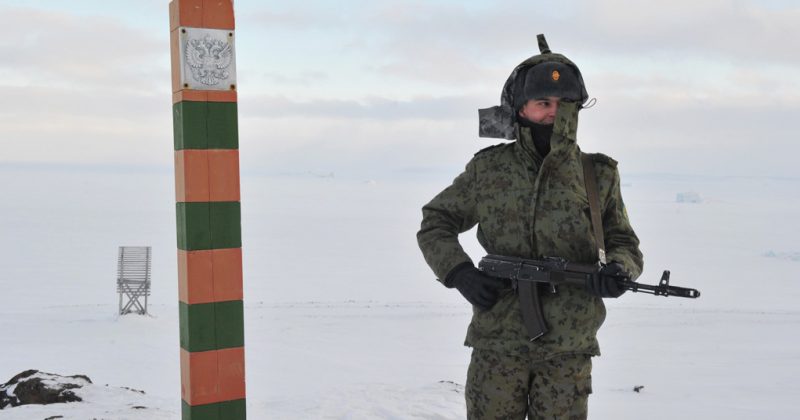A team of Russian researchers are researching the recently rediscovered remains of a secret German World War II weather station on an island near the North Pole.
The weather station, named Treasure Hunter in German, was built by the German military in 1943. It is located on Alexandra Land, off the Franz Josef Land islands in the Barents Sea. It’s over 680 miles (1100 km) north of Arkhangelsk, Russia.
For most of the year, the islands are covered in snow and ice. The last visit to the station was in 1980. In August this year, the archaeological team was able to explore and catalog the area for the first time since the Arctic was much warmer than usual. Evgeny Ermolov, the senior researcher with the Russian Arctic National Park, said that the entire area was free of snow and ice which allowed them to fully explore the area. The Russian Arctic National Park administers the island.
The team found the remains of several German army and navy uniforms. They also found fragments of weapons and ammunition, including rifle and machine-gun rounds and land mines and hand grenades. The artifacts were left behind when the base’s occupants left on a German U-boat in 1944.
Starting in 1943, approximately ten German meteorologists and laborers worked on the island. They were part of a secret network of Arctic stations that gave advanced warning of weather conditions in the northern oceans and northern Europe. The Germans considered this information vital to their military operations.
The Russian team collected over 600 objects from the remains of the base’s buildings, a supply depot near the base and an emergency airplane landing strip. The items were sent to the Arctic National Park museum in Arkhangelsk for further study.
The environment of Alexandra Land is very dry and nearly free of microbes which helped preserve wood, leather and cloth items at the site. They also found the remains of books and documents, including meteorology textbooks, German naval manuals, weather records, astronomical tables, magazines and a copy of Mark Twain’s “Tom Sawyer.”
The team found supplies of canned food, including sardines from Portugal that were labeled in English for sale in the US.
During the winter, several boats filled with supplies were crushed by the ice and sank. The team at the base hunted polar bears in order to survive. Unfortunately, they failed to cook the meat properly, and the entire team got trichinosis.
According to the German historian, Franz Selinger, the Germans undertook a daring rescue flight in July of 1944 to bring a doctor to the island and bring the sick meteorologists home.
The rescue plane damaged a wheel on landing, so a second aircraft had to be sent to bring a replacement wheel before the first plane could head back with the evacuees.
The archaeological team had to search a large area, but they were able to find the emergency landing field, providing proof to support the written sources.
The Russian military used some of the base’s buildings after the war. Eventually, Russia built their Nagurskoye air base on the island in the 1950s.
Germany sent specialists in the 1980s to remove landmines that had been planted for the base’s defense.
This summer, however, was the first time the base had been comprehensively studied since it was abandoned.
There has been speculation that the name Treasure Hunter indicates that the base was more than a weather station, Live Science reported.
Polar historian William Barr said that it was only a weather station, one of the ten in the Arctic islands north of Europe.
“It was quite disastrous — the expedition leader went crazy, and when they were flown out he had to be strapped down to the floor of the aircraft, so he wouldn’t run riot,” Barr said.
The Russian researchers also found no reason to believe there was anything other than a weather station there.
 Photo Credit
"
title="Frontier guard at frontier station "Nagurskoye" of Federal Border Guard Service of Arkhangelsk region, located on Alexandra Land island.
Photo Credit
"
title="Frontier guard at frontier station "Nagurskoye" of Federal Border Guard Service of Arkhangelsk region, located on Alexandra Land island.